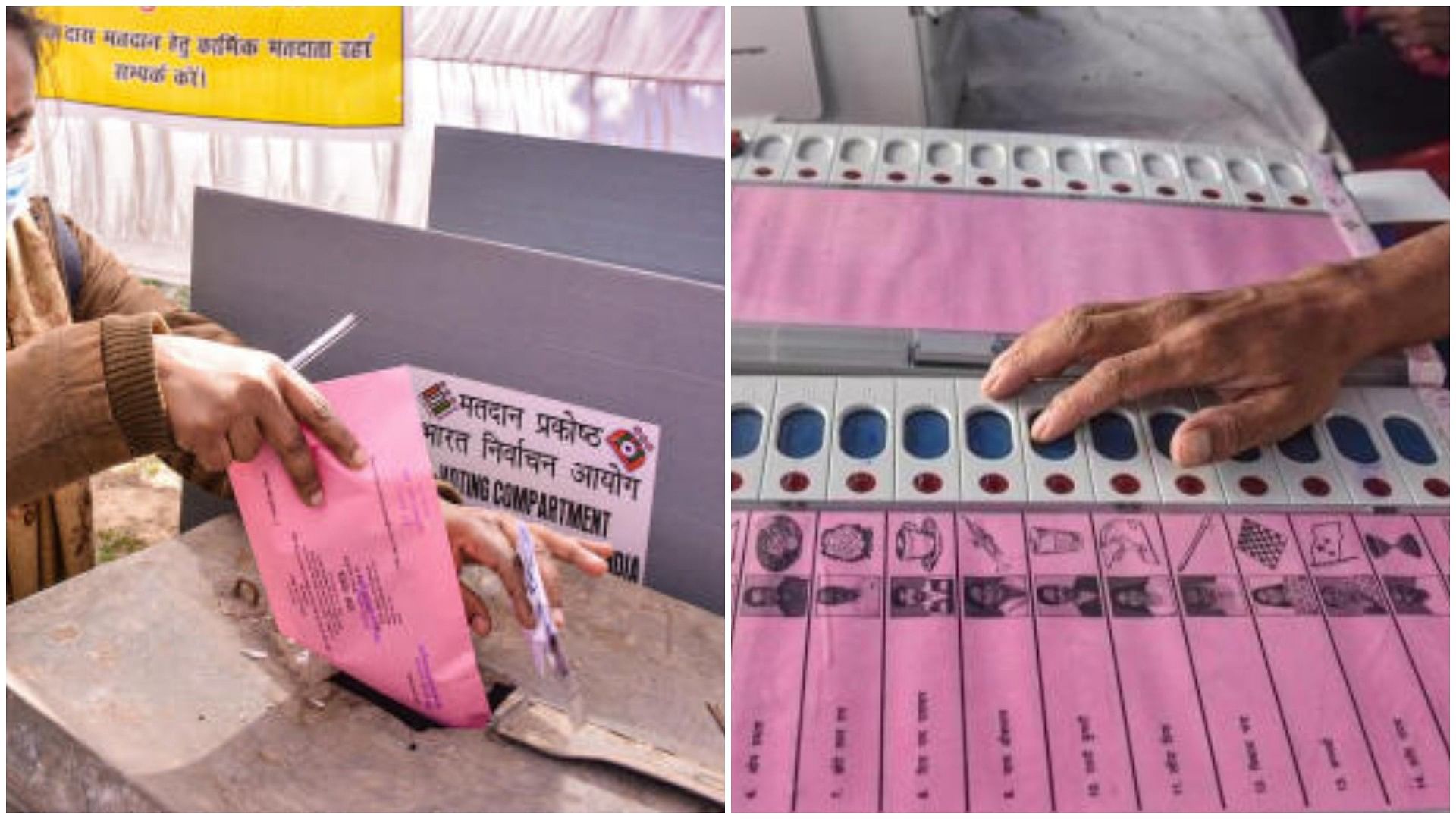
People casting votes through a postal ballot and EVM.
Credit: PTI Photos
Beginning on April 19, Lok Sabha elections will be held in seven phases and results will be announced on June 4.
The Chief Election Commissioner (CEC), Rajiv Kumar, had said that there are 97.8 crore eligible voters, of which 49.72 crore are male and 47.1 crore are female.
Electors can cast their votes using Electronic Voting Machines (EVM) and postal ballots.
What are EVMs?
An EVM is a white box with blue buttons that enable a voter to pick a candidate of their choice in their constituency. The electronic device aids the voting process and has two units - Control and Balloting. The former lies with the Presiding Officer or a Polling Officer, while the latter is placed in the voting compartment.
Instead of issuing a ballot paper, the officer who is placed in charge of the Control unit releases a ballot by pressing the Ballot button on the Control unit. The two units are connected by a five-metre cable and once a ballot has been issued, voters can cast their vote by pressing the blue button on the Balloting unit.
A maximum of 2,000 votes can be recorded by an EVM.
What are postal ballots?
Postal ballot is a method of voting wherein people who are unable to cast their votes in person, cast their votes in mail.
It is useful for four categories of voters, including special voters (senior citizens, persons with disability), service voters, people on election duty and electors who are subjected to preventive detention.
Eligible voters submit an application to the Returning Officer (RO) of their respective constituency. The application contains personal details, voter identification information, and the reason for seeking a postal ballot. RO issues postal ballot if he/she deems the criteria fit.